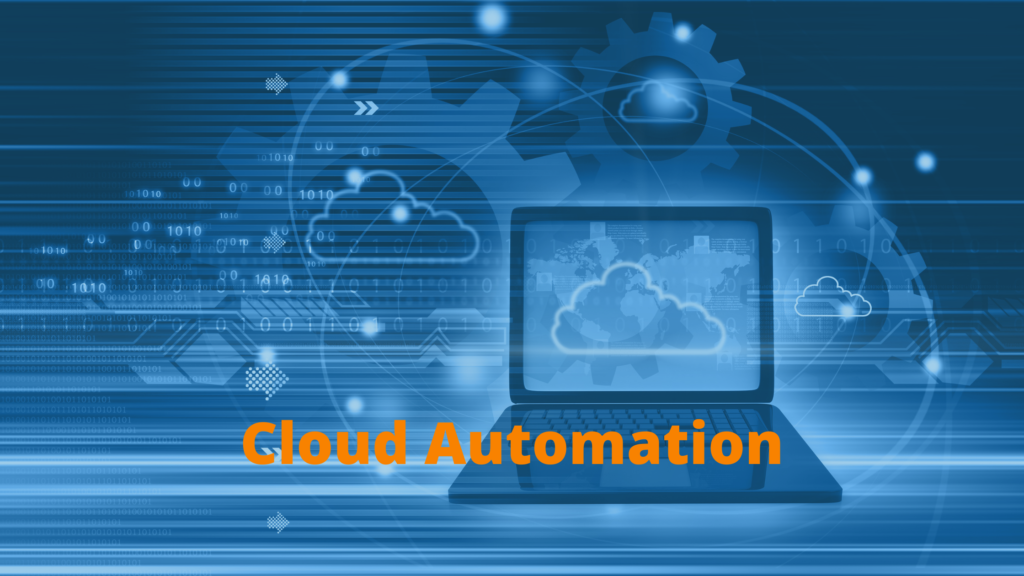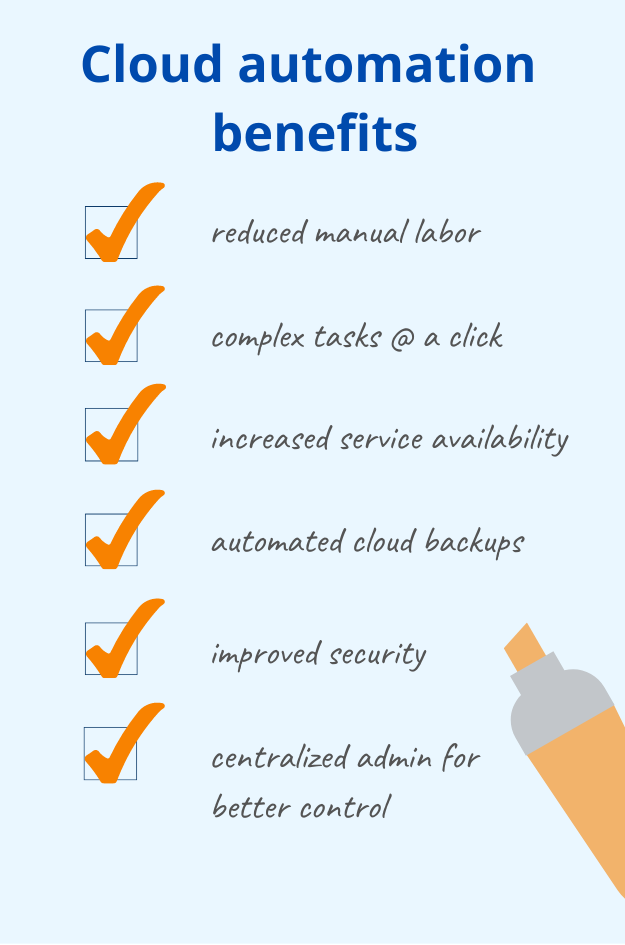
Automation was always intended to be a big part of cloud computing. The idea was for automated, on-demand services that can scale dynamically as the demand increases. What many people don’t realize is that for a service to become automated, it has to be brought to that point through hard work and expertise. Automation doesn’t simply happen. It’s designed.
So let’s talk about cloud automation and how it can be utilized by today’s organizations.
Topics in this article
What is Cloud Automation?
Cloud automation allows IT developers and teams to interact with cloud-based resources automatically, whether they’re creating resources, modifying them, or simply taking them down. The idea is to be able to access and use services on demand, as needed. However, to get this routine/system in place, there is a lot of testing and fine-tuning that must be done manually. It’s no easy task and often resource-intensive.
Something as complex as Cloud Automation doesn’t come integrated into cloud software. It requires knowledge, expertise, and specialized tools. There are plenty of tools available that you can use to your benefit.
Cloud vendors like AWS and Azure, private cloud platforms like OpenStack and Cloud Foundry, and cloud environments like Puppet and Chef, they all offer tools, features, and capabilities that can help you get “automated”.
But don’t underestimate the amount of hard work required to get cloud automation up and running. The good news: Once you get there, the payoff can be extraordinary.
Benefits of cloud automation
75% of businesses claim that the availability of service improved once they switched to the cloud. The ability to perform complex tasks with a couple of button clicks can greatly reduce the need for manual labor, but there are plenty of other benefits, too.
Cloud Automation provides improved security because it eliminates the need for several people to log into the system. When dealing with mission-critical systems, every person that logs in is a potential security risk, whether it’s human error or intentional sabotage.
In fact, 94% of businesses found that security improved significantly after moving their data to the cloud. That’s why at least 48% of businesses are choosing to upload their most sensitive data rather than keep it local.
Backing up can be done automatically, reliably, and backups can be uploaded directly to the cloud.

Backing up sensitive data is crucial to any project, and automating backups ensures that you’re protected against all sorts of data loss. Gartner predicts that 50% of organizations will actually increase their budget for cloud-based disaster recovery solutions in the next two years.
Finally, automation gives administrators a much more centralized view of what exactly is going on in their network, so they can better monitor and control infrastructure that’s crucial to the organization. Out of all the companies that switched to the cloud, 80% noticed improvements in their IT departments within six months.
Differences between Cloud Automation and Cloud Orchestration

Cloud Orchestration can be thought of as a way to organize automation. Where automation can perform tasks without the need for manual involvement, orchestration can dictate which tasks are performed, when they’re performed, which apps are communicating with each other, and so on.
For example, if tasks need to be completed in a certain order, there’s no way to dictate that order with automation alone. You’ll need Cloud Orchestration to ensure that the order is followed properly.
There are many figurative moving parts when it comes to automating tasks, and orchestration can help make sure everything works together smoothly.
Common Uses for Cloud Automation
There are several uses for Cloud Automation in a modern workplace. Here are just a few examples.
Infrastructure as Code (IaC)
Infrastructure as Code, or IaC, is a practice that’s being adopted by companies all over the world. Cloud Automation, paired with orchestration, makes IaC far more effective by allowing orchestration of complex systems. If you want to know more, please read articles on IaC on AWS as well as IaC on Azure.
Workload Management
This goes back to something mentioned earlier. Cloud Automation gives administrators a clearer view of what’s going on in their environment, which allows them to make adjustments as necessary. With auto-scaling, they can see what’s running and divert necessary resources, but they can also do the opposite and clear unused resources. This is essential to get organizations running at maximum efficiency.
Hybrid Cloud
Hybrid cloud environments integrate physical, on-premise systems with cloud-based systems, and with cloud automation, companies can regularly synchronize between local data centers and cloud resources. Cloud automation can also be used to perform “cloud bursting,” which is when assets are transferred to the cloud when local limits are exceeded. Read about how NetApp can help automate hybrid cloud storage.
Cloud Automation Tools
While cloud automation can be done with throwaway scripts, the complex and intricate nature of cloud automation leaves it better suited to more mature automation platforms. Here are a few examples of those systems.
Puppet
Puppet played a big role in the development of IaC. Puppet Enterprise, its commercial version, can support up to 20,000 Puppet nodes. It offers both a GUI interface and Domain Specific Language scripts and can be used for public, private, and hybrid clouds.
Ansible
Developed by Red Hat, Ansible is another product synonymous with IaC. Ansible Tower offers full orchestration capabilities and provides what they call “playbooks,” which let you automate complex series of actions. Like Puppet, it offers GUI and DSL for defining configurations, but you could always use a REST API.
Kubernetes
While this one isn’t a cloud automation system, strictly speaking, it lets you manage and orchestrate Docker containers, which can be used to run cloud-based workloads. It’s widely used on the public cloud and is offered by Amazon Elastic Kubernetes Service, Google Kubernetes Engine, and more. Read our series of articles about managing and automating Kubernetes storage.
AWS Elastic Beanstalk
Elastic Beanstalk lets you deploy applications developed with PHP, .NET, Jaa, Python, Ruby, and more services, across EC2 instances. After you upload your code, Elastic Beanstalk takes it from there, provisioning the application, auto-scaling, load balancing, and more.
AWS CloudFormation
CloudFormation is Amazon’s IaC platform. It’ll allow you to define declarative templates for what you want to run in the cloud and Amazon will do the heavy lifting and spin up the resources needed. You can automate simple to complex tasks, even ones that incorporate several Amazon services.
Terraform
An open-source tool by Hashicorp, Terraform is for those looking to create and modify IaC. It doesn’t handle configuration management, so it will work in conjunction with CM programs like Puppet. Terraform generates execution plans that show how it’s going to get to the desired state and it will automatically create new plans when configuration changes.
Cloud Automation is the future
Cloud automation is more important than ever. The pandemic has shown people the viability of working from home. Despite the ability to return to workspaces, many companies are now adopting remote work for the long-term, with some companies planning to be 75% remote by 2025.
We’re at the point where, if small and medium businesses don’t start looking into cloud automation, they’re going to be left behind. This is why it’s more than ever important to get support by a well-versed professional IT automation specialist, someone that can get your cloud-based operations up and running, stable, secure and in a short time. Therefore, hiring an automation service provider may be the most important business decision that you make to secure your successful future.
